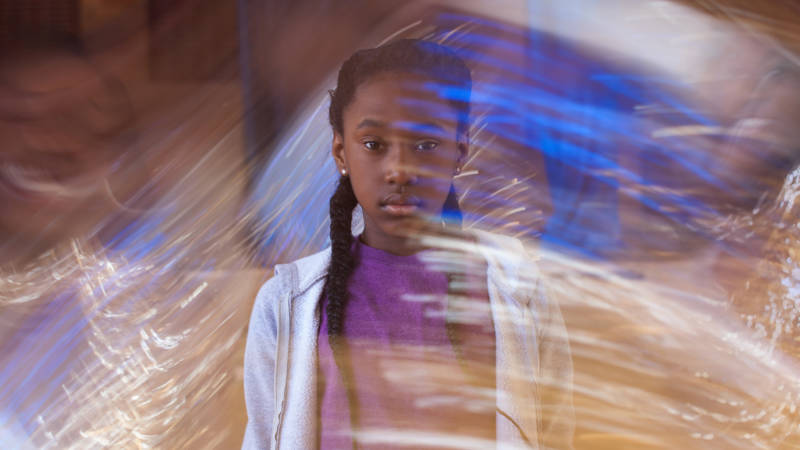The Fits is a movie that, if examined scene by scene and frame by frame, confirms its own uniqueness the way a conservationist might identify a member of an endangered species. The narrative directing debut of Anna Rose Holmer, the film mixes an all-amateur cast; a largely dialogue-free script; a whole lot of gliding and stationary long takes by cinematographer Paul Yee; and a scant 72-minute runtime to create the sort of mature and precise cinematic vision that is swiftly disappearing from the American landscape.
Set in and around a community center in Cincinnati’s majority-black West End, the film swiftly introduces us to Toni (Royalty Hightower), a shy, tightly braided preteen tomboy whose steely gaze tells us far more than the few words she utters. Toni walks to the rec center every day with her older brother Jermaine (Da’Sean Minor) to box with the boys, and, presumably, so the siblings can stay out of trouble after school with no parents around.
But Toni shoots longing glances across the building to where the dance team (all older girls, all brimming with confidence and sexuality) practices their step routines. The team is played by the Q-Kidz, a real Cincinnati step team that also choreographed their own movements for the film — their founder, Marquicia Jones-Woods, is an Associate Producer. In a long tracking shot, the first of many instances where filmmaking technique doubles as character development, Toni lugs her heavy boxing equipment through a hallway while the dancers joyously sprint around her, hoisting their latest state championship trophy.
Soon there is a journey across the gym, as Toni ditches the boxing gloves for stretch pants and joins the new class of rookie dancers called “crabs.” (The film embraces rhythm and body movement, and mines humor from the ways the crabs are frequently out-of-sync with routine, each recruit performing her own idea of what dancing looks like.) Not long after, dread sets in: One by one, each of the older girls experiences seizure-like twitching spells, where their eyes fixate on some far-away place while their bodies writhe with violence. Later, when she emerges from her stupor, one girl says the trip “was like I was watching it from above.”


